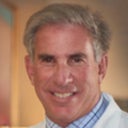Posted underBreast Fat Transfer q&a
Can one transfer fat to a small area of the body to determine risk of lumps if they are interested in breast fat transfer?
I have a history of autoimmune issues which worries me in my reaction to fat transfer, specifically lumps. Is it possible to transfer a small amount of fat to an area, let's say the hips, to determine if lumps show up? And would doing a FT to the hips be representative of the risk of lumps in the breasts?
Answers (7)
From board-certified doctors and trusted medical professionals
Dr. Mats Hagstrom, MD (license on probation)
Board Certified Plastic Surgeon
Answer
More Breast Fat Transfer Questions
See all Breast Fat Transfer Q&AWE SEND PRETTY
EMAILS
What’s trending? Who’s turning heads? Which TikTok myths need busting? We’ve got you. No fluff, no gatekeeping—just real talk. Get our free, unfiltered newsletter.




